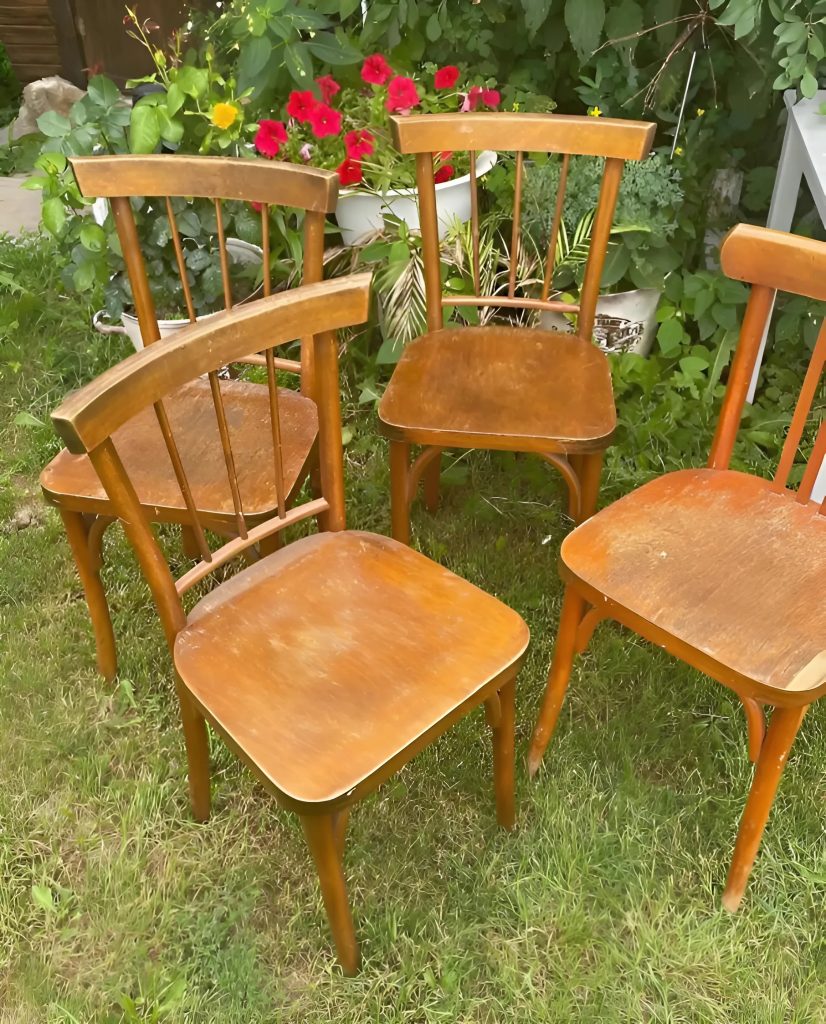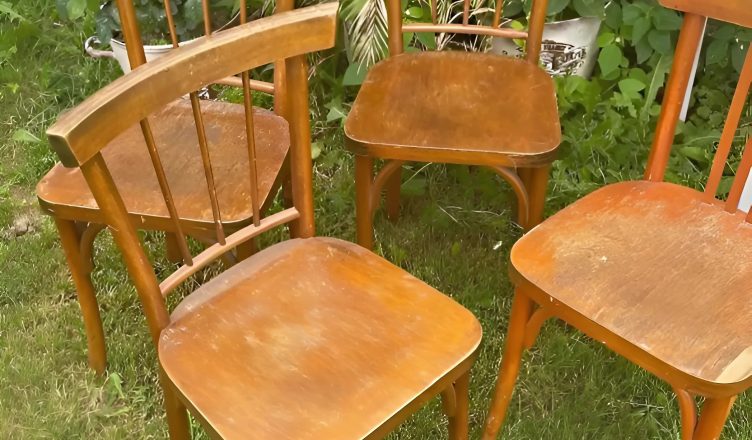Some objects in life have more soul than they appear to. They may look old, scratched, forgotten — but they carry stories. That’s exactly how it was with the four wooden chairs that had stood, for as long as I can remember, in the corner of our family’s summer house. They were never discarded, though their varnish had faded, their seats creaked slightly, and the color had long since lost any warmth. Still, they were solid. Built to last.
One early spring afternoon, my older brother and I looked at them and said almost simultaneously, “Why don’t we fix them up?”
What followed was a week-long journey not just of wood and polish — but of patience, creativity, and rediscovery.
Day One: The Stripping Back
The process began with cleaning — the kind that isn’t glamorous or immediately satisfying. We stripped the old varnish with a chemical remover, working outdoors so the scent wouldn’t overwhelm the house. As the top layer of finish dissolved and the bare wood began to emerge, we saw the raw texture for the first time in years. It was pale, but proud — not rotten, not warped, just waiting.
We took turns sanding. Hours passed. The woodgrain slowly came to life again, smooth beneath our fingertips. Dents became challenges. Cracks became puzzles. We used wood filler where needed, small clamps for alignment, and by the end of the first full day, the chairs already looked… awake.
Day Two: Planning the Transformation
We had a choice to make: restore or reinvent.
Restoration would mean returning them to their original state — same finish, same color. But reinvention meant freedom. And freedom sounded much more fun.
We spent the evening drawing concepts, scrolling for inspiration, even arguing (in a sibling way) over which look fit best. Eventually, we agreed: each chair would be different — united by a shared base color, but with distinct design accents. That way, they’d tell a story together, without being identical copies.
Day Three and Four: Paint, Pattern, and Patience
We primed the wood carefully and let it dry overnight. Then came the base coat — a soft matte charcoal grey that absorbed light beautifully. Already, the chairs looked like something you’d find in a boutique café rather than an old attic.

Then came the bold part.
On one chair, we used masking tape to create a geometric pattern on the backrest, which we filled with muted gold. On another, we painted delicate ivy vines that wrapped up one leg and across the seat — a tribute to the garden outside. A third chair was painted in a minimalist, modern Scandinavian pattern, and the last… we left nearly untouched, with only a single stenciled quote on the back slat:
“Built to carry more than just weight.”
It felt fitting.
Day Five: Sealing and Finishing Touches
After the paint dried, we applied two coats of clear matte polyurethane sealer. Not glossy, not too flat — just enough to protect without distracting from the details. Once sealed, we added felt pads under the legs to prevent scratching and replaced the seat cushions with new foam and fabric.
The fabric was another debate. We finally settled on a neutral, linen-textured upholstery that gave them a timeless look without trying too hard.
When the last nail was in and the last cushion pressed into place, we stepped back.
Four chairs. The same bones. But completely new identities.
What We Discovered Along the Way
This wasn’t just about chairs.
It was about collaboration. About how two people who grew up together, argued over remote controls and cereal bowls, could still sit side by side sanding wood in silence, understanding each other without words.
It was about craftsmanship. About learning how long it takes to make something good — and how quickly cheap shortcuts ruin that.
It was about detail. About how something as small as a curve in a painted line or a well-fitted joint can make you feel unexpectedly proud.
A Second Life
The chairs now sit in our kitchen — a room that used to be defined by its neutral colors and functional furniture. Now, it has character. People who visit always comment on them. Some ask where we bought them. We laugh.
They were always ours.
But now, they feel like they are.
Why This Story Resonated
Because in a world of fast purchases and disposable furniture, this is a reminder: some things deserve a second chance. Not because they’re cheaper. But because they mean more.
Restoring the chairs wasn’t about saving money. It was about preserving a small piece of history — and building something we’ll remember not just sitting on, but making together.
And maybe, just maybe, that’s the kind of weight a chair is really built to carry.
